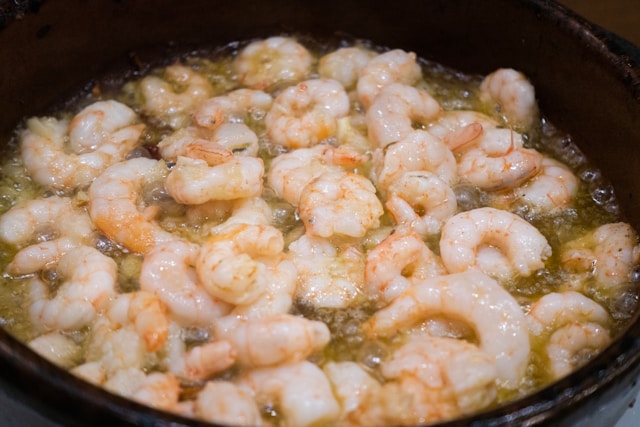Shrimp is an incredibly versatile ingredient that can be prepared in countless delicious ways. Whether you’re craving a classic shrimp scampi, an elegant shrimp cocktail, or a unique shrimp-based dish, this succulent seafood offers endless culinary possibilities. In this comprehensive guide, we’ll explore the different types of shrimp, share tips for proper storage and preparation, and dive into a variety of mouthwatering shrimp recipes to satisfy every palate.
Understanding the Different Types of Shrimp
Shrimp come in a wide range of sizes, shapes, and flavors, each variety offering its own unique characteristics. From the small, sweet bay shrimp to the large, juicy tiger shrimp, understanding the differences between shrimp types can help you choose the best option for your culinary creations.
Some of the most common shrimp varieties include:
- Wild-caught shrimp: Prized for their robust, natural flavors, wild-caught shrimp are often considered the superior choice for their superior texture and taste.
- Farmed shrimp: While not as highly regarded as their wild counterparts, farmed shrimp can still be a cost-effective and convenient option, especially for large-scale recipes.
- Shrimp sizes: Shrimp are typically classified by the number of shrimp per pound, with smaller sizes like 16/20 and 21/25 being more tender and delicate, while larger sizes like 8/12 and 10/15 offer a heartier, more substantial bite.
Storing and Preparing Shrimp
Proper storage and preparation of shrimp is crucial for ensuring optimal freshness and flavor. When purchasing shrimp, look for ones that are firm, with a bright, translucent color. Avoid any shrimp that seem discolored, mushy, or have a strong fishy odor.
To store shrimp, it’s best to keep them refrigerated or frozen. Refrigerated shrimp should be used within 1-2 days, while frozen shrimp can last for several months when stored properly. When ready to use, thaw the shrimp in the refrigerator or under cool running water, being careful not to leave them at room temperature for too long.
Once thawed, shrimp can be peeled, deveined, and prepared in a variety of ways, such as sautéing, grilling, or baking. Paying attention to cooking times is essential, as shrimp can quickly become tough and rubbery if overcooked.
Nutritional Benefits of Shrimp
In addition to their delectable flavor, shrimp offer a range of nutritional benefits. Low in calories yet high in protein, shrimp are an excellent source of essential vitamins and minerals, including:
- Protein: A 3-ounce serving of shrimp contains approximately 20 grams of high-quality protein.
- Omega-3 Fatty Acids: Shrimp are rich in omega-3 fatty acids, which are known to support heart health and cognitive function.
- Vitamins and Minerals: Shrimp are a good source of vitamins B12 and D, as well as the minerals selenium, iron, and phosphorus.
Whether you’re looking to incorporate more seafood into your diet or simply want to explore new and exciting shrimp-based recipes, the versatility and nutritional benefits of this delectable crustacean make it a kitchen staple worth exploring.
Classic Shrimp Dishes to Master
Shrimp has long been a beloved ingredient in many classic and iconic dishes. From the rich and buttery shrimp scampi to the elegant and refreshing shrimp cocktail, these timeless recipes have stood the test of time for good reason. Let’s dive into some of the must-try shrimp dishes that every home cook should have in their repertoire.
Shrimp Scampi
Shrimp scampi is a quintessential Italian-American dish that features succulent shrimp sautéed in a garlic-butter sauce, often served over a bed of pasta or with crusty bread for sopping up the flavorful juices. The key to a delicious shrimp scampi lies in the balance of the rich, buttery sauce and the tender, juicy shrimp.
To make the perfect shrimp scampi, start by sautéing minced garlic in a generous amount of butter or olive oil. Once the garlic is fragrant, add the shrimp and cook until they’re just opaque and slightly curled. Finish the dish with a splash of white wine or lemon juice, a sprinkle of fresh parsley, and a generous seasoning of salt and pepper.
Shrimp scampi pairs beautifully with a simple green salad and a side of crusty bread or al dente pasta, such as linguine or spaghetti.
Shrimp Cocktail
The classic shrimp cocktail is a sophisticated and timeless appetizer that never fails to impress. Featuring plump, chilled shrimp served with a tangy cocktail sauce, this dish is a study in simplicity and elegance.
To prepare the perfect shrimp cocktail, start by poaching the shrimp in a flavorful liquid, such as a mixture of water, lemon juice, and aromatic vegetables. Once the shrimp are cooked through and chilled, arrange them on a bed of crushed ice or lettuce leaves, and serve alongside a zesty cocktail sauce made with a blend of ketchup, horseradish, Worcestershire sauce, and lemon juice.
For an extra touch of sophistication, consider serving the shrimp cocktail in individual ramekins or martini glasses, and garnish with fresh lemon wedges or a sprig of parsley.
Shrimp Fried Rice
Shrimp fried rice is a beloved Chinese-American dish that seamlessly combines tender shrimp with fluffy, flavorful rice. This versatile recipe can be easily customized with a variety of vegetables, proteins, and seasonings to suit your personal preferences.
To make a delectable shrimp fried rice, start by sautéing peeled and deveined shrimp in a hot wok or large skillet until they’re cooked through. Remove the shrimp from the pan and set aside. In the same pan, sauté diced onions, carrots, and peas until tender, then add in cold, cooked rice. Stir-fry the rice until it’s hot and starting to crisp up, then return the shrimp to the pan and season with soy sauce, sesame oil, and a sprinkle of green onions or cilantro.
Shrimp fried rice makes for a satisfying and complete meal on its own, or it can be served as a side dish to complement a variety of Asian-inspired main courses.
Creative and Unique Shrimp Recipes
While the classic shrimp dishes are undoubtedly delicious, there’s a world of creative and unique shrimp recipes waiting to be explored. From the bold flavors of shrimp tacos to the refreshing complexity of shrimp ceviche, these innovative dishes will tantalize your taste buds and inspire you to expand your shrimp-cooking repertoire.
Shrimp Tacos
Shrimp tacos are a fun and flavorful way to incorporate this versatile seafood into a Mexican-inspired dish. The possibilities are endless when it comes to toppings and preparation methods, allowing you to customize the dish to your liking.
For a classic shrimp taco, start by sautéing or grilling the shrimp with a blend of spices, such as chili powder, cumin, and garlic. Serve the shrimp in warm corn or flour tortillas, and top with a crisp slaw, diced avocado, fresh cilantro, and a drizzle of crema or lime-infused sour cream.
Shrimp Ceviche
Shrimp ceviche is a refreshing and zesty seafood dish that showcases the natural sweetness of shrimp. In this preparation, the shrimp is “cooked” by marinating it in a citrus-based mixture, typically made with lime or lemon juice, along with diced onions, tomatoes, and a variety of other fresh vegetables and herbs.
To make shrimp ceviche, start by briefly poaching the shrimp to ensure it’s fully cooked, then let it cool and marinate in the citrus mixture for at least 30 minutes, or up to several hours. Serve the shrimp ceviche chilled, either on its own or with crisp tortilla chips or tostadas.
Shrimp Skewers
Shrimp skewers are a versatile and visually appealing way to enjoy this seafood. Whether grilled, broiled, or baked, shrimp skewers offer a fun and easy-to-eat option for both casual and formal occasions.
To prepare shrimp skewers, simply thread peeled and deveined shrimp onto metal or wooden skewers, leaving a bit of space between each shrimp. Brush the shrimp with a flavorful marinade, such as a mixture of olive oil, lemon juice, garlic, and herbs, and grill or broil until the shrimp are opaque and slightly charred.
Shrimp skewers can be served as a main course, accompanied by rice or roasted vegetables, or as a tasty appetizer or party snack.
Tips for Buying, Storing, and Cooking Shrimp
To ensure the best possible shrimp-based dishes, it’s important to understand the proper techniques for selecting, storing, and cooking this delicate seafood. By following these tips, you can unlock the full flavor and texture of your shrimp recipes.
Selecting the Freshest Shrimp
When shopping for shrimp, look for ones that are firm, with a bright, translucent color. Avoid any shrimp that appear discolored, mushy, or have a strong fishy odor, as these are signs of freshness. When possible, choose wild-caught shrimp, as they are often considered to have a more robust and natural flavor.
Proper Storage and Handling of Shrimp
To maintain the freshness and quality of your shrimp, it’s important to store them properly. Refrigerated shrimp should be used within 1-2 days, while frozen shrimp can last for several months when stored in an airtight container or freezer bag.
When ready to use, thaw the shrimp in the refrigerator or under cool running water, being careful not to leave them at room temperature for too long, as this can promote bacterial growth.
Cooking Shrimp to Perfection
Achieving perfectly cooked shrimp is a delicate balance, as they can quickly become tough and rubbery if overcooked. To ensure your shrimp turn out tender and juicy, pay close attention to cooking times and techniques.
For sautéed or grilled shrimp, cook them until they’re just opaque and slightly curled, usually 2-3 minutes per side. When baking or broiling, keep a close eye on the shrimp and remove them from the heat as soon as they turn pink and no longer appear translucent.
By following these tips for buying, storing, and cooking shrimp, you’ll be well on your way to creating delicious and memorable shrimp-based dishes in your own kitchen.

